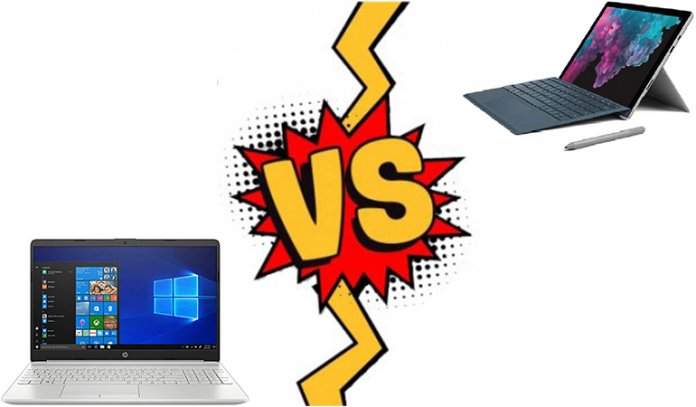Among touch screen laptops vs non touch laptops which one is better? Many buyers still have this question in mind when buying a new laptop. There are many reasons you would want to buy a touch screen laptop. Some of them could be easier to use, fun to navigate and come in sleeker models. However, this kind of laptop as a concept is still developing.
Contents
At first, touch screens were available only on expensive and high-end business laptops. But nowadays, almost every manufacturer wants to include one in their line of laptops. The good news is that it doesn’t mean you have to give up all the advantages of traditional laptops.
In other words, if you are asking the same questions and looking for information, this blog should be helpful. Before we compare touch laptops vs non-touch laptops, let us understand their advantages and disadvantages.
Advantages of Touchscreen Laptop Displays
Touchscreen laptops like Acer Chromebook Spin 311 are getting popular each day, with more people turning to them. Touchscreen technology is more than just a gimmick and can improve the functionality of your computer. With a touchscreen laptop, you will perform tasks that are very difficult to do on a traditional laptop. Touchscreen laptops also allow for faster navigation allowing get through tasks fast.
Great for Drawing And Note-taking
When the first touchscreen laptops got debuted, they were accepted globally for their smooth note-taking and innovative drawing functions. The recent HP Chromebook and Lenovo Chromebook C330 also offer handy functions to the user. Touchscreen laptops are great for artists, students, and anyone else who needs to draw or take notes on the go. They are also great for quickly typing up a couple of notes, scanning a document, or playing casual games.
High-quality Expressive Displays
The quality of a laptop’s display is one of the most important features that you need to consider when making a purchase. A display with a high contrast ratio and high resolution will offer you the best experience. But the display quality is not the only criterion for a great display. The size of the display screen and the durability of the screen is also more important. A good example could be Lenovo Flex 14, 2-in-1 Convertible Laptop, 14 Inch FHD Touchscreen Display.
The Disadvantages of Touchscreen Laptop Displays
Drains the Laptop Battery Quickly
As you have probably noticed, most laptop displays have an integrated touchscreen. Touchscreens use both the same kind of technology as smartphones and tablets, but they also employ some special features that are unique to laptops. That is the reason why many laptops have a shorter battery life than other devices.
Some of these features enable the user to interact easily with the display by touching it, but others drain the battery quickly and cause the laptop to turn off more often. The best way to improve the battery life of a laptop is to opt for a non-touchscreen model.
Expensive
Touchscreen laptops are expensive to buy, as their manufacturing cost is more. But there are several advantages to buying a laptop with a touchscreen. It might mean you need to spend a little more to get the best performance from your machine, but the benefits are worth it. Touch screens are resistant to damage and comfortable to use. But their highly sensitive nature can lead to accidental damage, which can be quite costly.
Heavy
When the touchscreen laptop was first introduced, touchscreens were hyped as the perfect way to navigate a computer without a mouse or keyboard. However, as touchscreens became more and more popular, laptops with a track pad found their place as much-needed alternatives to touch-centric devices. Not only that, but the touchpad itself became heavier as the software industry began to rely more and more on touchpad-specific gestures such as swipes and scrolling.
Challenging to View in Direct Light
The touch-enabled laptop is an important innovation for users, and they have a great demand for touchscreen laptops. However, some people experience a problem when using a touch-enabled laptop under direct light. This problem first emerged with the first laptops with touchscreens, but the problem is more common with laptops with displays that are not glossy.
Final Thoughts
In this conflict between Touch Screen Laptops vs Non Touch Laptops, the touch screen takes the spotlight away? On the one hand, you have standard touch screen laptops, while on the other hand, you have non touch screen laptops. Touch screen laptops have been around for some years now, but they came to the forefront with the iPad and the iPhone. Non-touch screen laptops have been around for much longer, and there’s a reason that they are still being used today.


